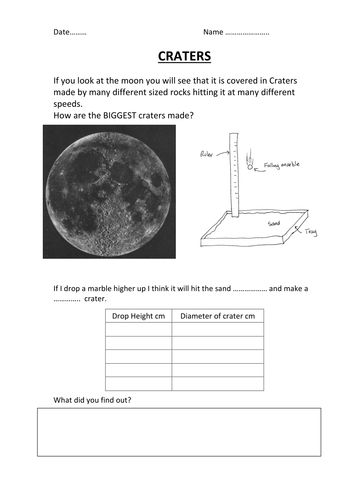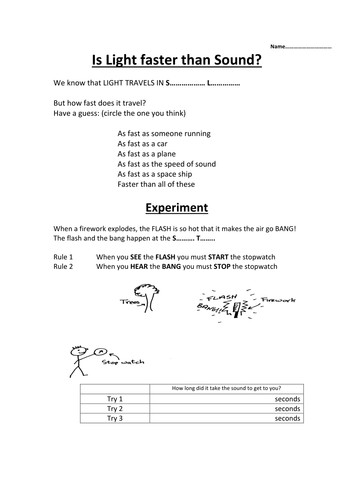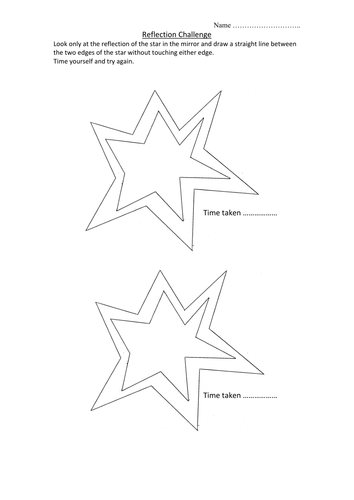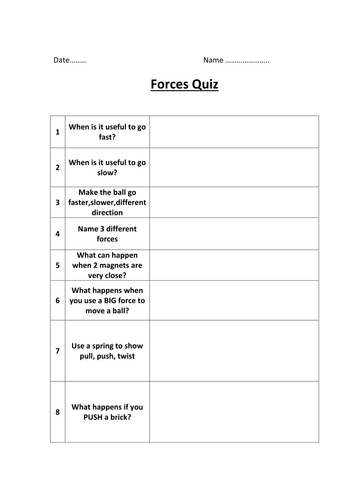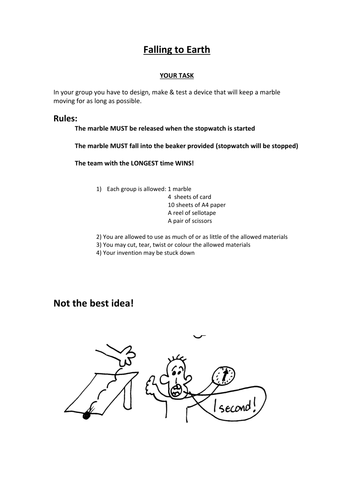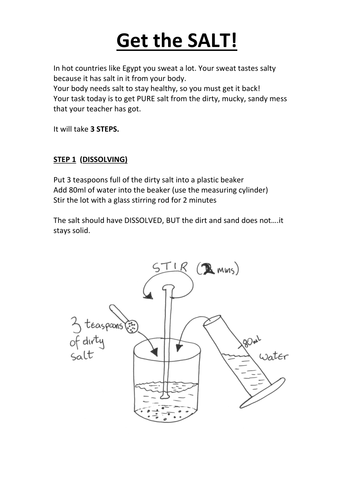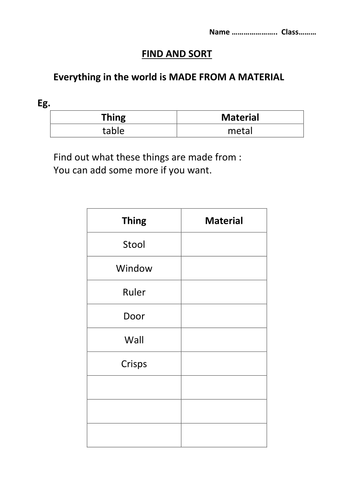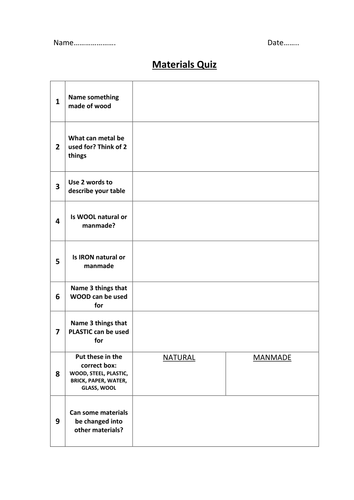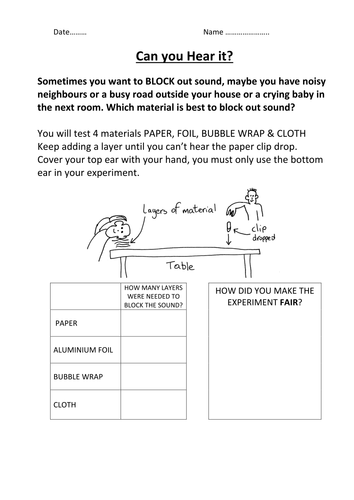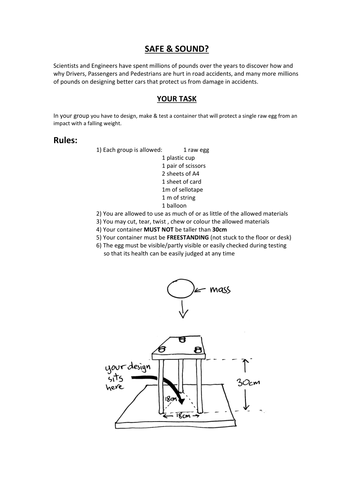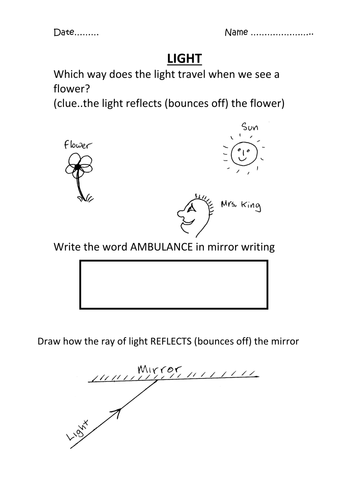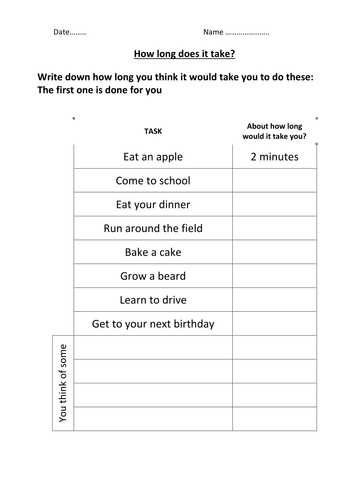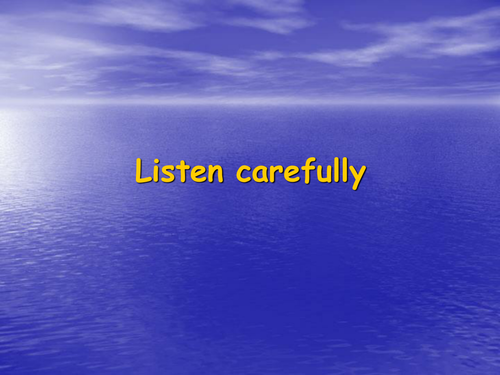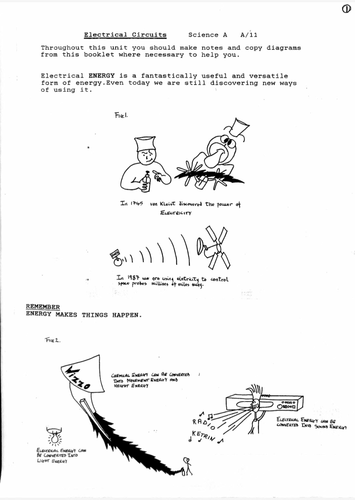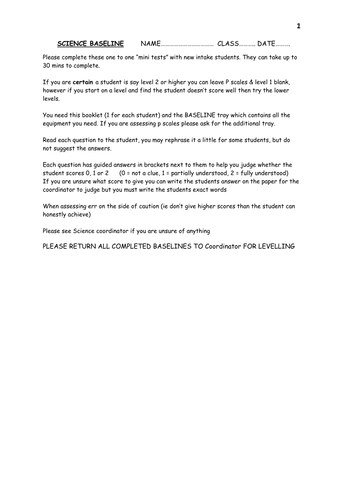
69Uploads
16k+Views
514Downloads
Physics

CRATERS
A set of experiments designed to get students thinking about possible VARIABLES that may make craters bigger or smaller. This can lead to a full investigation once the student has chosen a "good" (more controlable variable)

Speed of Light vs speed of sound
A beautiful demo with students timing with stopwatches.
I typically do this around bonfire night, but if you buy some rockets (the banging type) you can do this anytime.
You really need a school playing field with no sports or the like going on.
Wedge the wooden stick of the rocket (any size will do) into the ground in one corner of the field, get students with stopwatches as far away from the rocket as poss (yes for safety..but more importantly the further the better results you get)
YOU light the rocket and let students 200/300m away know that by usual jumpimg up and down or arm waving...students prepare to start stopwatches as soon as they see the FLASH (on the ground because the rocket is wedged into the ground)...the sound of course eerily does not get heard until a second or so later.
Do this as many times as you have rockets, all results can be pooled and averaged later on.
There is scope for this demo to be done a mile or 2 apart..using mobile phones and taking students to a nearby park..the rocket is released and explodes high up above school field...students do the timing thing from as far away as is practicable...Google maps will give you an accurate distance to calculate speed of sound should you wish

Reflection STAR challenge
We have had so much fun with this!
careful...some students (especially SEN) can get annoyed & "throw their toys out of the pram"...but I often "over" challenge my students so that they can practice handling "upset"..very important life skill.
Working in pairs one student holds a book or card infront of the other student so that they can not see the worksheet, using a mirror they can look at a reflection of the star and try to draw a straight line on the star outline without touching either of the boundary lines...try it yourself first and get rid of all that frustration

Sound quiz
A nice sound quiz which gets more difficult as you go along.
A good way to introduce a sound topic, generate discussion and assess how much the students know

Marble challenge
Students are give some material resources to keep a single marble "moving" before it finally drops into a beaker (plastic)
The challenge is to keep it moving the LONGEST.
With such simple resources and some stop watches the students spend as long as needed to design, test and finally submit an entry for the challenge.Over the years I have seen most students go for the SIMPLE DILUTED GRAVITY technique..lots of long ramps end to end..they do work well if lined up well and prove good physics ideas.
The best solution was wonderful....a set of cones (upsidedown Chines rice pickers hats) with a hole at the point..a marble is released in the top hat and spirals slowly into the middle, drops onto the edge of the next hat below and so on...yes still diluted gravity but elegantly more compact and easier to construct...of course the students will come up with ideas you have never dreamed of........

Get the salt
Students are given some dirty salt (salt +sand/soil..whatever you wish) I have even simulated urine(orange juice) to reinforce the plight of poor hygeine in some countries.
The sheet takes students through the 3 steps of purifying the salt.
The final step of evaporating the water using evaporating basins can be tricky if the heat is left on too long.....if no bunsens/heat is available you can just leave the solutions to "dry out" naturally..you can get nice crystals forming over a couple of days.
Why not take the students out for fish and chips later on (keeping a sample of your salt to sprinkle on your chips)

Find and sorting materials
Simple worksheet that allows students to invstigate materials and their uses around school (at home for HW).
Students can look at specific objects(chair) and write down what it seems to be from.
Students are also encouraged to look for the material and say what it is used for...so that materials and properties are approached from both ways.
Then the more tricky task of putting materials into groups, students can classify them in their own way..get ready for some unusual classification techniques.
As an extension students can continue with materials/objects of their own choice..this usually introduces the student's own interests into scientific method.

Materials quiz
A simple quiz with well thought out and tested questions intended to stimulate thought and discussion about materials and their properties.
There is no mark scheme as I have found that students come up with unexpected but valid answers which can engage the class and foster interest

Can you hear it?
With limited resorces this gives students an opportunity to test out "sound proofing"
You just need a table, paper clip, ruler and a selection of materials that may be useful in blocking out the noise from a noisy neighbour
Give the students as much guidance as you like or alternatively, as I prefer, just give them the limited resorces and tell them to devise a "fair" test.
Potential for discussion, competition and looking silly walking around with ear protectors made out of the winning material

EGG SQUASH
This is one of my most succesful Investigations/puzzles/problem solving tasks I produced and used over many years
The main aim is to protect a raw egg. Specif materials are given to "teams" they can use them abuse them, cut, rip, chew or even ignore them, but for FAIRNESS every team has the SAME materials.
This encourages Independent work, team work, prblem solving. It works well with motion studies: air bags, crumple zones etc.
The egg with it's protection is placed (by the students) onto the platform...The tricky news..you need to build a simple platform out of 2 bits of wood and 3 dowel rods..pretty easy really, mine has lasted 20 years but shows it.
The creation is placed on the base, you gently lower the top wooden board on top (sandwich like) and begin to drop a mass (I used a 2kg mass) from higher & higher..until the egg is "SQuashed" you must be able to see/feel the egg after each drop.
Over the years I have had spectacular successes & failures...lots of news paper on floor is useful.
Best ever result a 2kg drop from over 2.5m and the egg survived!..the crumple zone produced was superb.
Ideas the students had..air bag (balloon above egg/ below egg, egg INSIDE balloon and pumped up...great fun!
tubes made from paper/card, padding from ,aterials, hammocks using string etc etc
I spent the first lesson or 2 letting the students just make anything..next lesson...TESTED one by one infront of the class..then if you wish discuss the "Winner" & why?...then repeat expt if you wish for the next couple of lessons.
Before hand I usually did the "squash the egg with yiour hand" (in a clear plastic bag) yes I know you know they are strong but have you actually got the students to do it? got other staff..big bloke staff..crying because they can't...NO rings or fingernails just grip...then after they have tried and failed just drop iton the table to prove it is an egg!

What do you know about light?
Thought provoking worksheet on light and what you thought about it.
Pictures are a great way to overcome conceptual difficulties, very friendly

How long does it take?
Simple activities to get students thinking abot time intervals and what they mean.
Everyday activities are thought about and estimates of time recorded on the worksheet

Earth and Beyond
A nice assessment "old" levels 1 to 5
Assesses student's understanding of the Earth, sun, shadows, Earth's axis, day & night etc etc
Students draw in shapes of Earth, orbits to show understanding. Also draw in the position of the sun at different times as well as shadow changes.
All in all a friendly way to judge progress.
Enjoy.

Listen...can you tell what itis?
A nice powerpoint bunch of slides..sound followed by the answer, you can edit the answers to suit yourself and names of staff for a bit of fun.
Add extra slides with your own sounds/student's or staff voices. Use your imagination...the idea is to recognize sounds...they can be anything..dropping things, flushing, rubbing, scratching, pets, etc etc etc

FORCES powerpoint
Simple visual introduction to FORCES should generate discussion and relevance to student's lives.
All slides have lovely movements and funny stuff

A Basic course in Electricity
Suitable for students and non "physics specialist staff"
Plenty of anecdotal info, historical info but particularly the basics of what electricity is, current, voltage, series, parallell circuits.
plenty of activities and worksheets as well as calculations to do and done for you.
Some of the info is dated as I wrote it in the late 80s but still applicable.
basic stuff can be used with primary but higher level work is appropriate for KS4 and can reinforce work in KS5 especially clearing up some misconceptions I have met in students over the years.

SCIENCE BASELINE assessment from level P4 to 4a (old NC levels)
I have used this assessment with students over the years and modified/improved as time went on.
I believe it to be a good way of assessing students when they are new to the school or even at the end of each year or indeed at any time you wish.
It is based around 4 small assessments for Biology, Chemistry & Physics, so a total of 12 mini-assessments.
Ideally the teacher or assistant spends up to 30 mins (can split the assessment over a few days if you wish but best results have been when the entire assessment is completed at one time) in a ONE TO ONE session.
The teacher/assistant reads the script (this is important as it reduces leading questions and clues to answers), the responses are noted down but in most cases a tick will indicate if the student has understood fully, partially understood or not understood at all.
Minimal resources are needed and are kept in a tray for use at any time. I believe doing or demonstrating science is a beautiful way to engage students, so the assesment uses this.
You will need to source basics like balloons, toy car, rocks etc.
I chose to set up 4 trays so 4 assessments could be completed at the same time (perhaps different classes)
The levels assessed are from P4 up to 4a old levels (which I believe are still useful) you may wish to change the names of the levels to suit your own school.
The script states which resources to use in each question as well as appropriate answers that should be expected for fully, partially and not at all levels of understanding. This allows staff that are not science trained to be able to complete these assessments with the students with relative ease.
Good luck

